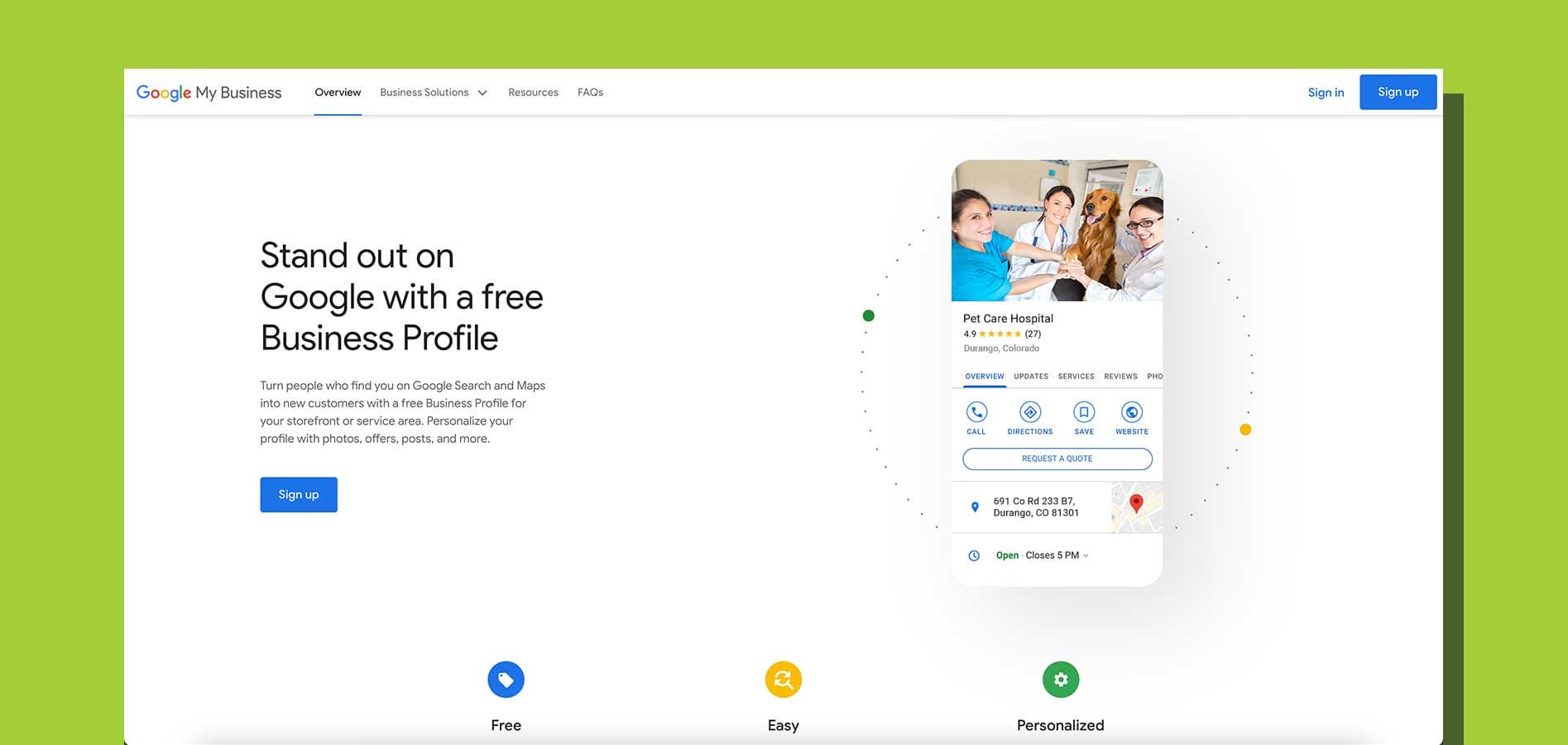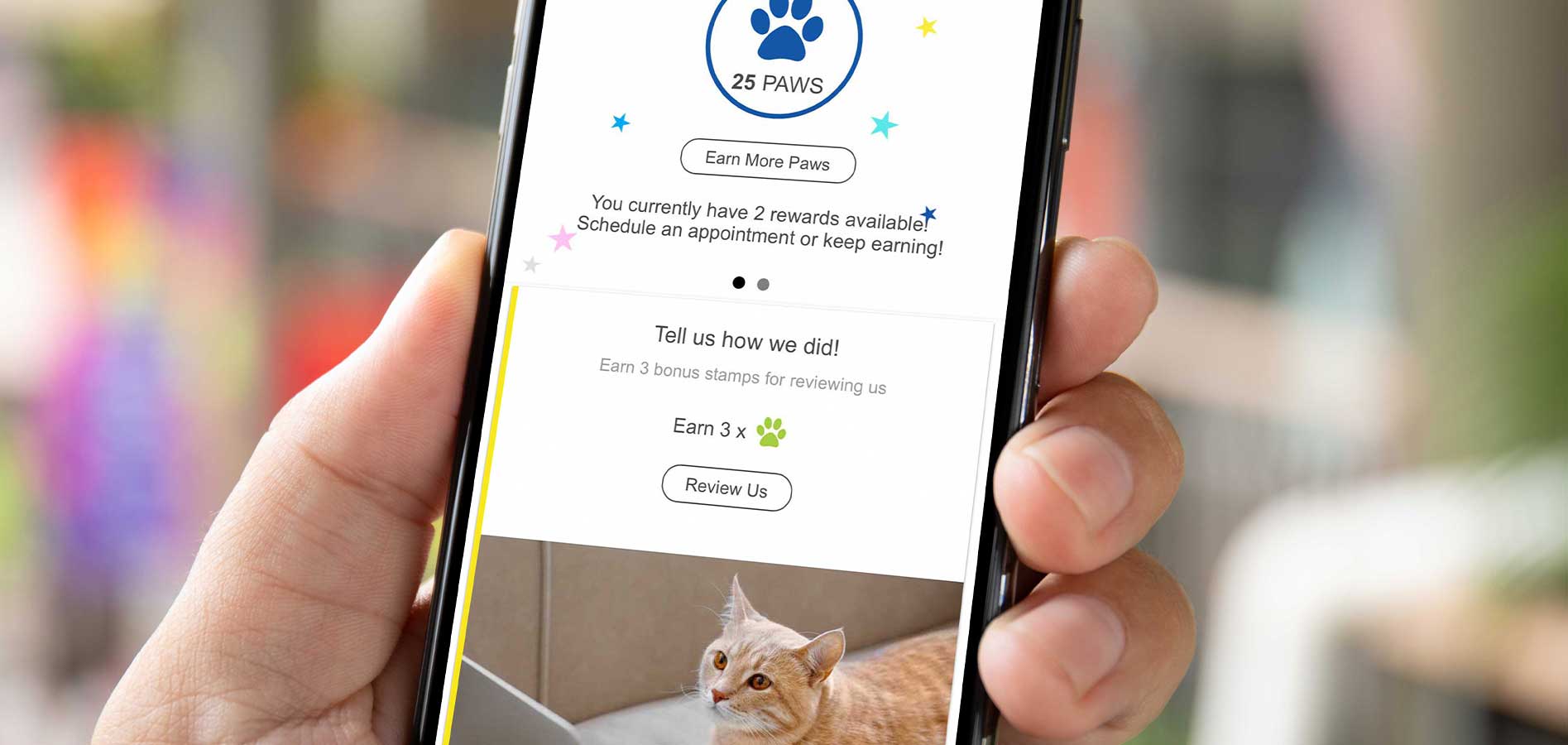Online reviews can be a blessing or a curse, depending on what rating your veterinary practice receives. Regardless of your rating, prospective clients will eagerly check out all the details of your bedside manner, practical skills, customer service attitude, and patient care before deciding if you’re the veterinarian for them. Based on the culmination of your online reviews—and the public’s general consensus—you may gain or lose potential clients, making this aspect of reputation management essential.
To help you manage — and hopefully improve — your veterinary practice’s online reputation, check out the following tips.
1: Ensure you have access to your business site on Google and Yelp
You’ve probably read reviews for other businesses on Google or Yelp, so it’s safe to assume that pet owners are reading reviews for veterinary practices on these sites, too. That’s why it’s important that you manage your practice’s information on Google and Yelp.
With Yelp, you can provide updated business hours, contact info, and service details. You can also respond to messages and reviews on your practice’s Yelp page. Google offers many of the same features, and you can truly customize your Google listing with photos, posts, and other personalized details that help you connect with clients. Both of these services are free, so there’s no reason to not take advantage of free advertisement and reputation management opportunities.

2: Solicit feedback with post-visit surveys
While receiving online reviews can be terrifying, not having any online reviews can be equally as scary. A business without any reviews looks suspicious to potential clients, so soliciting reviews is a must, especially if you own a fairly new practice. By having plenty of reviews for prospective veterinary clients to read through, you’ll be able to offer a great overall view of your practice’s stance on customer service and patient care. These reviews are invaluable when pet owners are searching for a new veterinarian.
An easy way to solicit feedback from clients is through a post-visit survey. Create a short survey to send to clients after specific appointment types, and push the positive feedback to online review sites, while the negative feedback can be used internally to drive improvements in patient care and client service.
The key is to keep post-visit surveys short and simple, so they don’t feel like work to the client.
3: Encourage your great clients to leave a review
You know that favorite client of yours who is always going on about how great every single member of your veterinary team is? Hit them up for a review. Chances are, they’d be delighted to extoll your virtues to the online world. A happy client is a great resource to have when you are trying to garner more online reviews.

4: Reward your clients for leaving reviews
Admit it. How often do you leave online reviews? They sound like work, don’t they? Especially if you don’t receive a free cheeseburger or $5 off your next pizza delivery for your troubles. The same thought crosses your veterinary clients’ minds when asked to leave a review. Reward them with a veterinary loyalty stamp for taking the time and effort to write up a review, or even to rate your practice on your Facebook page. This helps you kill two birds with one stone—you beef up your online reviews, and you get more clients signed up for your loyalty program.
Pro tip: If you are rewarding clients for leaving online reviews, you must reward them regardless of the rating they give your practice.

5: Respond to online reviews in a timely manner
Honestly evaluate how long it takes you to respond to online reviews. If your answer isn’t less than 24 to 48 hours, you need to step up your reply game. When people take to the review sites to voice their thoughts on a business, they want to be heard. If you show that your practice takes little interest in the thoughts of clients, you’re portraying a negative, impersonal image to prospective clients.
Whether a review is positive or negative, ensure you respond appropriately in a timely manner. A quick, “Thank you for making our team’s day with this great review!” may be all that is needed for a positive review, while negative reviews require a bit more finesse.
6: Take your negative review responses offline
If you’re faced with a negative review, try to handle it offline as much as possible. Avoid the back and forth of a “he said, she said” scenario in front of the entire virtual community. Also, absolutely avoid placing blame or assuming guilt. Instead, create a bland response that shows you acknowledge the client’s concerns, and if they wish to discuss the matter in depth, they can reach you at your practice’s phone number or email. If the matter ends up being positively resolved, kindly ask the client to remove or update their review to reflect the resolution.
Managing your veterinary practice’s online reputation may seem like a full-time job, and one you wish you didn’t have to tackle. Make the task easier with automatic post-visit surveys. Schedule your demo of the Vet2Pet platform to learn how this feature and more can make your online reputation management a cinch.



